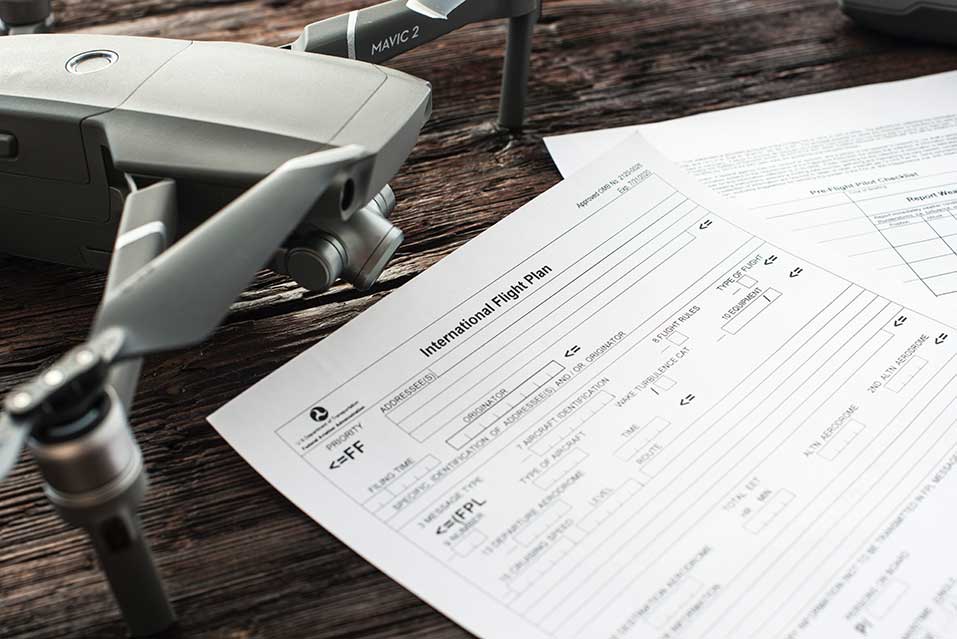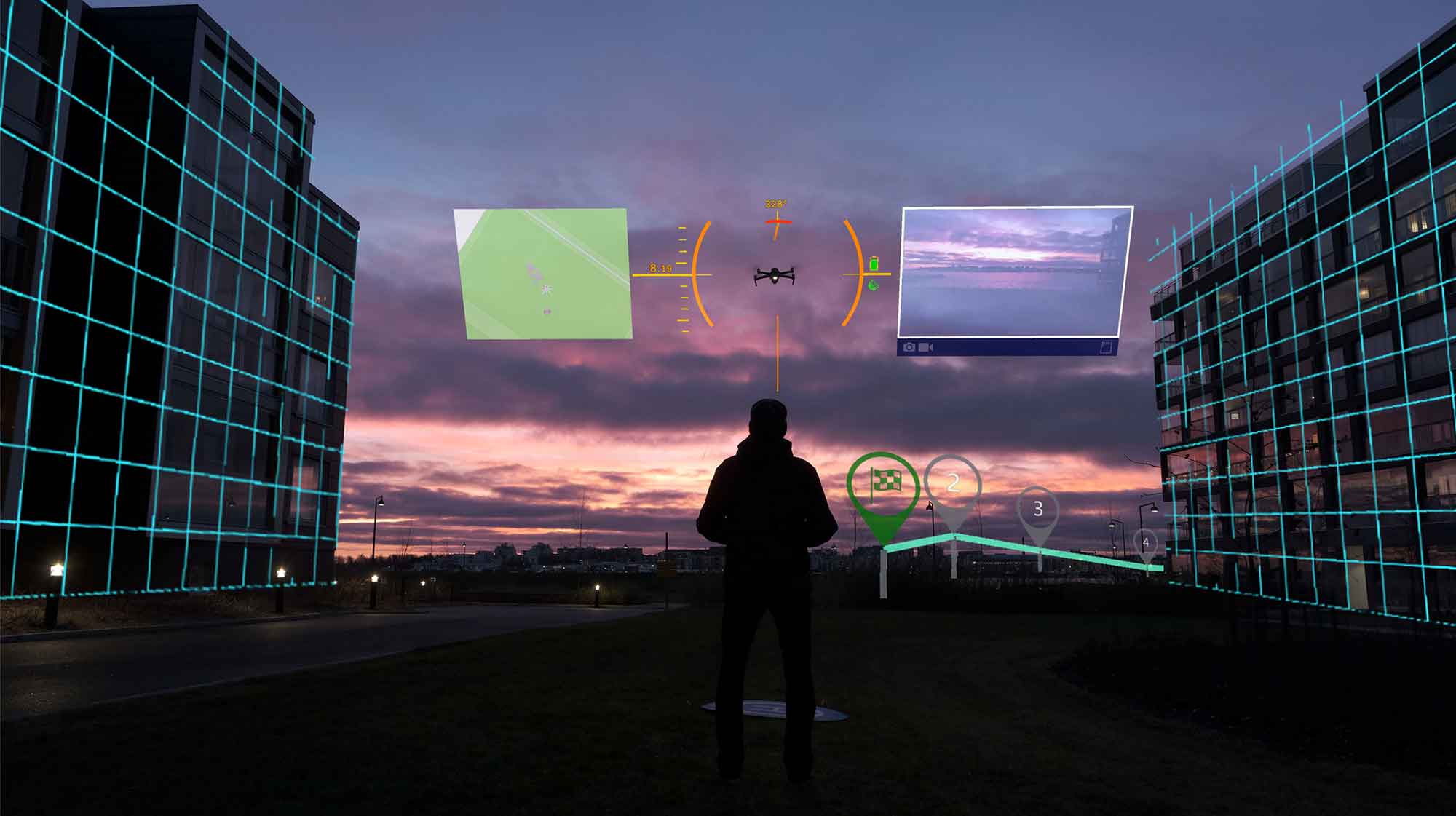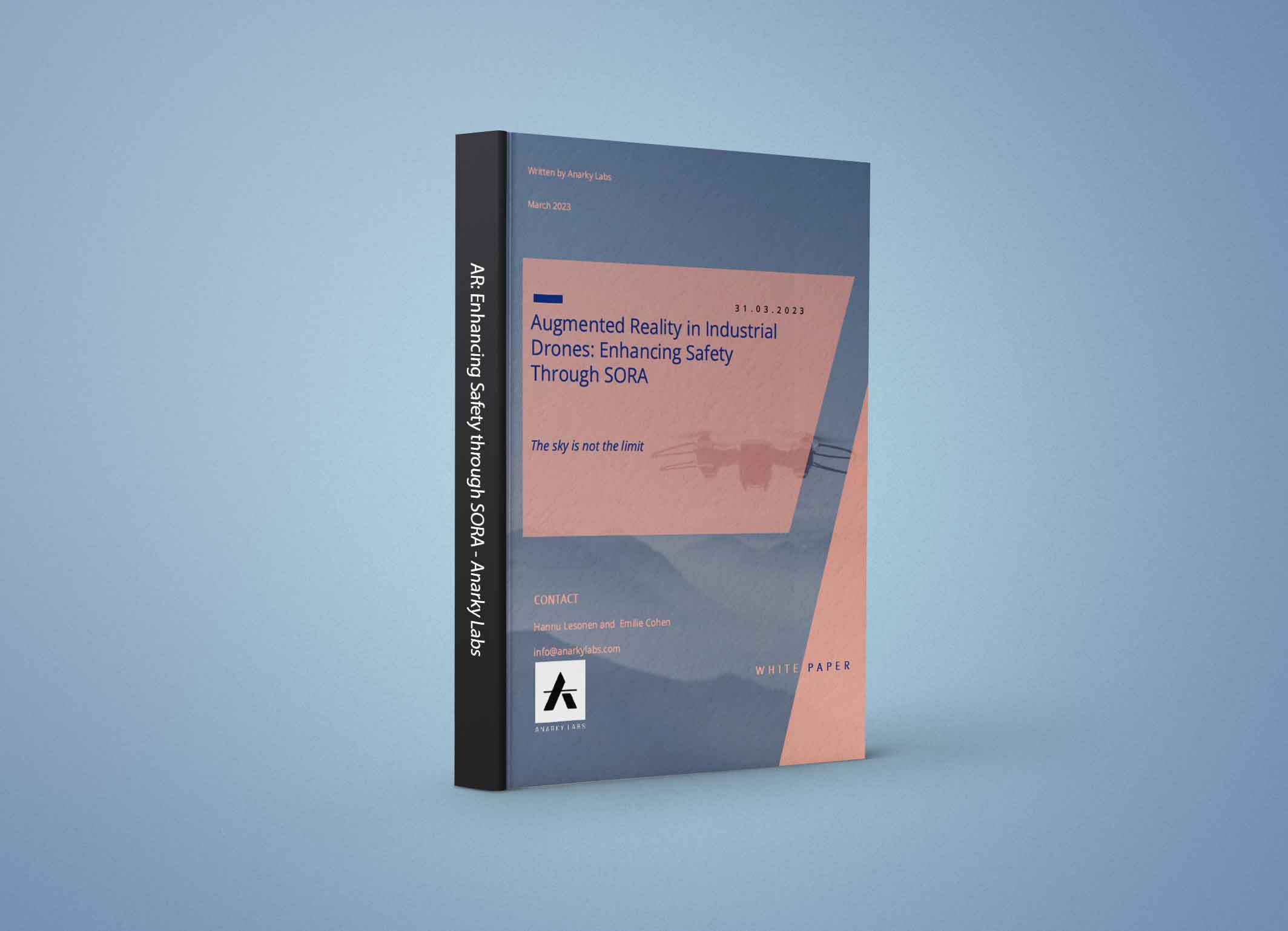How can Augmented Reality Glasses help Situational Awareness?
Augmented Reality Glasses greatly enhance situational awareness for drone operators. These glasses provide a unique and immersive experience that allows you to see real-time data and information overlaying the actual environment. By wearing these glasses, you can have a more comprehensive understanding of your surroundings, which is crucial for safe and effective drone operations.
One of the main advantages of using Augmented Reality Glasses is the ability to see the drone’s telemetry data without taking your eyes off the aircraft. This means you can keep your focus on flying the drone while simultaneously monitoring important information such as altitude, speed, battery life, and GPS coordinates. This real-time data display on the glasses’ lenses helps you make informed decisions and react quickly to any changes in the flight conditions.
Furthermore, Augmented Reality Glasses can allow you to see the live video feed from the drone’s camera, allowing you to have a first-person view (FPV) perspective. This FPV experience gives you a sense of being inside the drone, enabling you to navigate through complex environments and obstacles more effectively. You can also use this feature to inspect structures or monitor specific areas without physically being present.
In addition to telemetry data and FPV, Augmented Reality Glasses can also display information from other sources, such as airspace restrictions, weather updates, and even virtual objects or markers to assist with navigation. AirHUD – Software created by Anarky Labs is designed to work with numerous types of AR glasses and allows exactly this kind of functionality.
An example of flying VLOS with a drone
Flying a drone within visual line of sight (VLOS) is a practical example of utilizing augmented reality glasses for enhanced situational awareness. When you fly a drone using VLOS, you maintain direct visual contact with the drone at all times. This means that you can see the drone with your own eyes and monitor its flight path, position, and surroundings without relying solely on the drone’s camera feed.
By wearing augmented reality glasses while flying a drone VLOS, you can further enhance your situational awareness. These glasses overlay real-time data and information onto your field of view, providing you with valuable insights about the drone’s flight parameters, battery life, altitude, and distance from obstacles. This augmented information allows you to make more informed decisions and react quickly to any potential hazards or risks. This is exactly how AirHUD works for instance.
For example, imagine you’re flying your drone in a park. With the augmented reality glasses, you can see the drone’s exact altitude, flight speed, and remaining battery life overlaid on your field of view. If you notice that the battery is running low or that the drone is flying too close to a tree, you can take immediate action to prevent a potential crash or loss of the drone.
Augmented reality glasses can also display real-time weather conditions, GPS coordinates, and other relevant data, giving you a comprehensive understanding of your surroundings. This additional information can help you navigate through challenging environments and ensure that you maintain a safe flight path.
An example of flying EVLOS with a drone
When flying a drone using extended visual line of sight (EVLOS), you can navigate the drone beyond your direct visual contact while still maintaining situational awareness. Let’s say you’re flying your drone in a large open field. Flying EVLOS, you can fly the drone up to a certain distance where it’s still visible to the naked eye, but not directly in your line of sight, however because you’re wearing the AR glasses you still see all the overlaid data and can pinpoint your drone. This allows you to explore different areas and capture unique footage without physically moving from your spot.
For example, you spot an interesting structure on the other side of the field, but it’s too far to reach with a visual line of sight (VLOS) flight. With AirHUD, you can fly the drone towards that structure while monitoring its position and surroundings through the AR Glasses, the realtime video feed and see all the related data. By constantly observing the drone’s position relative to its surroundings, you can ensure it stays within the designated boundaries and avoid any potential obstacles. This situational awareness is crucial for maintaining safety and avoiding collisions with other objects or aircraft.
As you continue flying the drone in EVLOS mode, it’s important to keep in mind the limitations and regulations set by authorities. This may include maintaining a certain altitude, flying in designated areas, or obtaining special permits for flying beyond visual line of sight (BVLOS). By adhering to these guidelines and using EVLOS responsibly, you can enjoy the freedom to explore new perspectives and capture stunning aerial footage while still prioritizing safety and situational awareness.
An example of flying BVLOS with a drone
To demonstrate the capabilities of flying beyond visual line of sight (BVLOS) with a drone, consider this scenario.
Imagine you’re a professional aerial surveyor tasked with mapping a large area of land for a construction project. The area covers several square kilometers and is located in a remote region with difficult terrain and limited road access.
With BVLOS capabilities, you can launch your drone from a designated area and fly it to the survey location without the need for a visual observer or maintaining direct line of sight. The drone is equipped with advanced sensors and cameras that allow you to capture high-resolution images and collect accurate data for the mapping project.
As you initiate the flight, you access real-time data feeds from air traffic control and other relevant sources to ensure the airspace is clear and safe. The drone autonomously navigates through pre-programmed waypoints, avoiding any obstacles or restricted areas. Throughout the flight, you maintain constant communication with the drone, receiving telemetry and sensor data, as well as live video feeds from its onboard cameras.
Despite being miles away from the drone, you have full situational awareness of its position, speed, altitude, and battery life. This information allows you to make informed decisions and adapt the flight plan if necessary. In case of any unexpected events, you can immediately take control manually and safely land the drone.
Once the survey is complete, you navigate the drone back to its designated landing zone, utilizing the BVLOS capabilities to ensure a smooth and efficient return.
AirHUD software for instance has been specifically designed to work BVLOS and is used in industrial and emergency response environments.
This scenario showcases the immense potential of BVLOS operations, enabling professionals like you to conduct complex tasks in remote areas, saving time, resources, and increasing overall efficiency.
What other considerations are there?
In addition, it’s important to take into account the weather conditions and airspace regulations when flying a drone. These factors play a crucial role in ensuring the safety and successful operation of your drone.
Firstly, weather conditions can significantly impact your drone’s flight. Strong winds, rain, fog, or snow can impair visibility and stability, making it difficult to control your drone. It’s essential to check the weather forecast before each flight and avoid flying in adverse conditions. Additionally, extreme temperatures can affect battery life and performance, so be mindful of the temperature range recommended by the manufacturer.
Secondly, airspace regulations are essential to follow to avoid potential conflicts with other aircraft and ensure the safe operation of your drone. Each country has its own set of rules and restrictions regarding drone flight. Familiarize yourself with these regulations, including any restrictions on altitude, distance from airports, or the need for special permits in certain areas. Ignoring airspace regulations can lead to accidents or legal consequences.
Furthermore, it’s crucial to consider the location where you intend to fly your drone. Flying in crowded areas, near buildings, or over people can pose a risk to their safety. Always choose a suitable and open area away from obstacles and people to minimize the chances of accidents or injury.
Lastly, it’s advisable to maintain a backup plan in case of unexpected situations. Always have spare batteries, extra propellers, and a first aid kit on hand. Being prepared can save you from potential setbacks and ensure a smooth flying experience.
SORA
Understanding the differences in situational awareness when flying a drone is crucial for safe and legal operations.
BVLOS (Beyond Visual Line of Sight) flights require advanced technology and strict regulations, while EVLOS (Extended Visual Line of Sight) flights allow for greater range but still require a visual connection to the drone.
VLOS (Visual Line of Sight) flights are the most common and straightforward, with the operator keeping the drone in their direct line of sight.
By adhering to the regulations and considering all factors, drone pilots can ensure a smooth and successful flight experience.
SORA stands for Specific Operations Risk Assessment and is a benchmark followed by most aviation authorities globally relating to situational awareness. Anarky Labs have committed to developing software that reduces the risk of drone operations. Our white paper on this can be found below.





